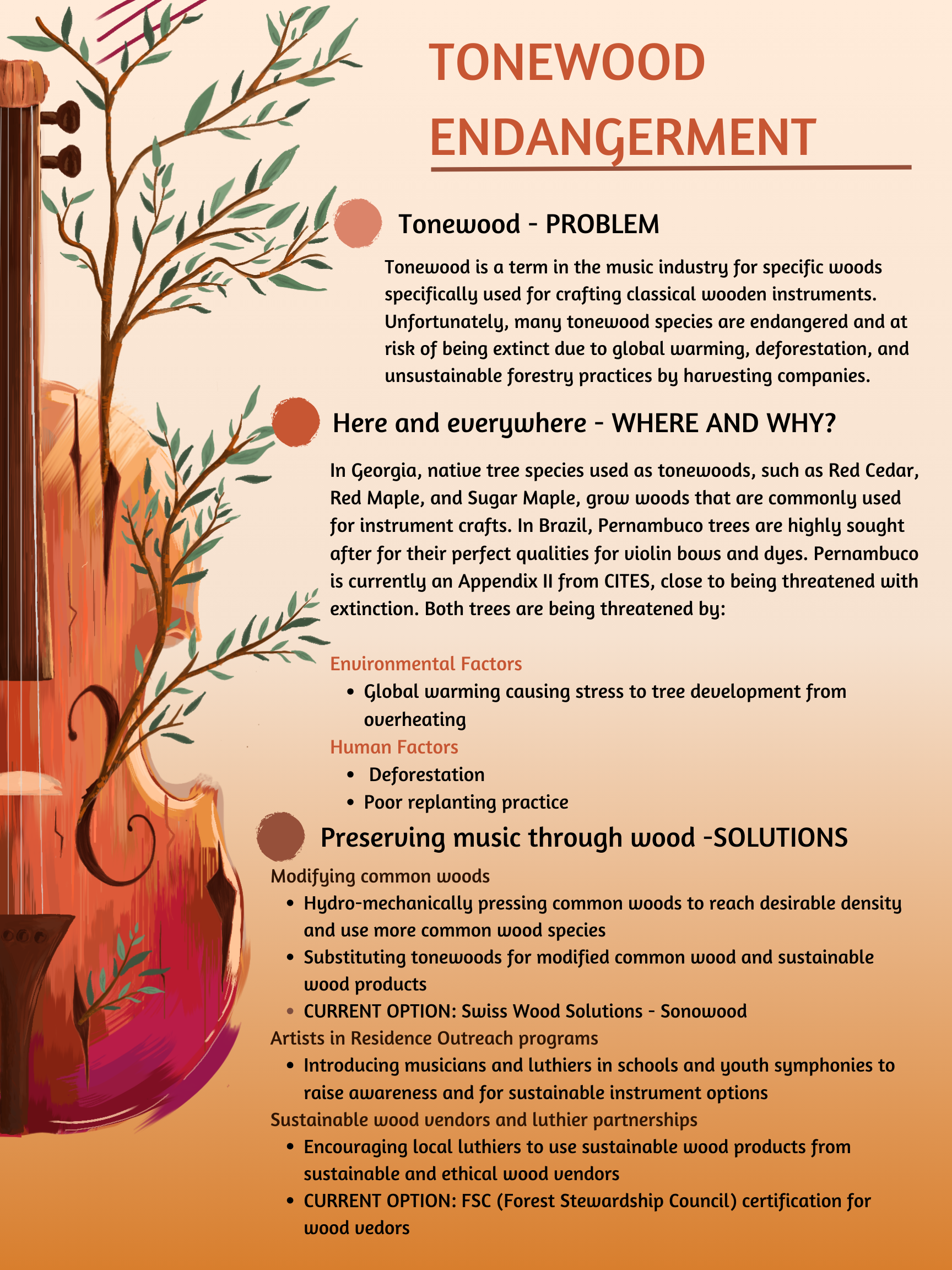Classical Western string instruments are included in craft and observational trials of the different tonewoods, specialized wood used for instrument making. Current antique models are worth $1 million - to $20 million for their exceptional craftsmanship and sound quality from their uniform ring width growth and dense internal structure to produce resonant sound.
Modern string instruments have more difficulty making the same structure or sound quality due to the development of current tonewood and tonewood species.
External environmental issues have contributed to the deteriorating growth of tonewood species over time and have increased the difficulty of achieving the same sound. Global warming of the Earth’s atmosphere over the centuries has brought internal stress to the internal structure of wood. Trees have responded by building resiliency in the internal layer, modifying the internal ring width structure, and the density of the wood.
Additionally, direct human handling of tonewoods from excessive deforestation and overharvesting of woods further harms the timber structure through generations of stress and modified responses to stress. The ideal physical properties of uniform and resonant wood are incredibly different from the perfect properties of aged instruments, making it harder to create quality instruments and preserve musical sound quality.
Contact us
Thank you for your interest in contacting Future Engineers. We look forward to connecting with you!
General Inquiries
support@futureengineers.orgSponsorship Inquiries
sponsor@futureengineers.org
